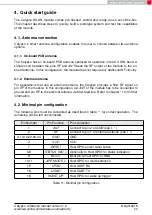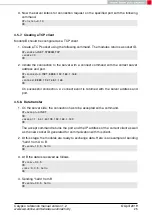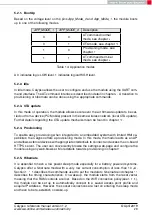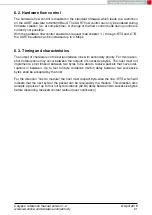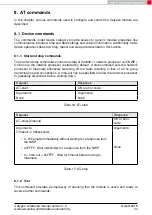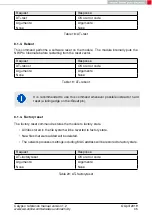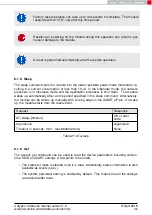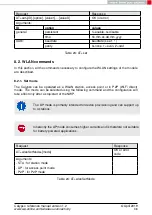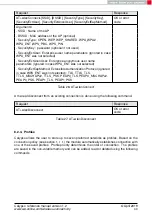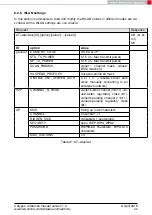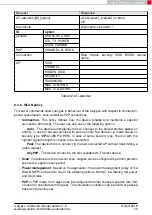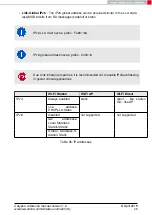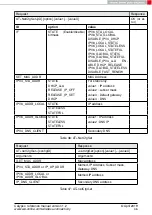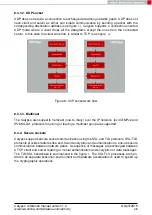
• Commands can have parameters in which case the delimiter "=" separates the com-
mand name from the list of parameters.
• AT commands can be entered in upper or lower case with optional whitespace between
the arguments.
• Further, each parameter is separated from the next with a "," delimiter. A comma shall
not be followed by a whitespace.
• In cases where a parameter is optional or ignored, it could be left empty. Nevertheless
the "," delimiter has to be present. An empty parameter looks like "„".
• String parameters containing spaces must be enclosed with quotation marks ("").
• All hexadecimal parameters must have a 0x prefix.
• MAC and network addresses must be entered as follows
–
MAC address - Six hexadecimal values of 8 bit each, represented as X:X:X:X:X:X
(X can range from 0x00 up to 0xFF), the ":" is used as delimiter
–
IPv4 address - Four decimal values of 8 bit each, represented as X.X.X.X (X can
range from 0 up to 255), the "." is used as delimiter per 8 bit
–
IPv6 address - Four hexadecimal numeric values of 32 bit each, represented as
X:X:X:X (X can range from 0x00000000 up to 0xFFFFFFFF), the ":" is used as
delimiter per 32 bit
• Bitmask parameters are represented using "|" delimiter - e.g. x|y
• Data should be either binary or Base64 format (binary to text encoding). Further details
about Base64 data encoding including reference implementation can be found in the
RFC 4648 of the IETF (Internet Engineering Task Force).
7.2.2. Confirmations
The commands confirms have the following syntax,
<command name>: < value1 > , <value2 > , . . . , <valueX >
On success, the confirms contain a positive acknowledgement.
OK
In case of error, the corresponding error code is with optional description is returned.
ERROR: < e r r o r d e s c r i p t i o n > , < e r r o r code>
7.2.3. Events
Asynchronous events can arrive at any time and can be represented by
+< e ven t name>: < value1 > , <value2 > , . . . , <valueX >
Calypso reference manual version 1.2
© April 2019
www.we-online.com/wireless-connectivity
33


